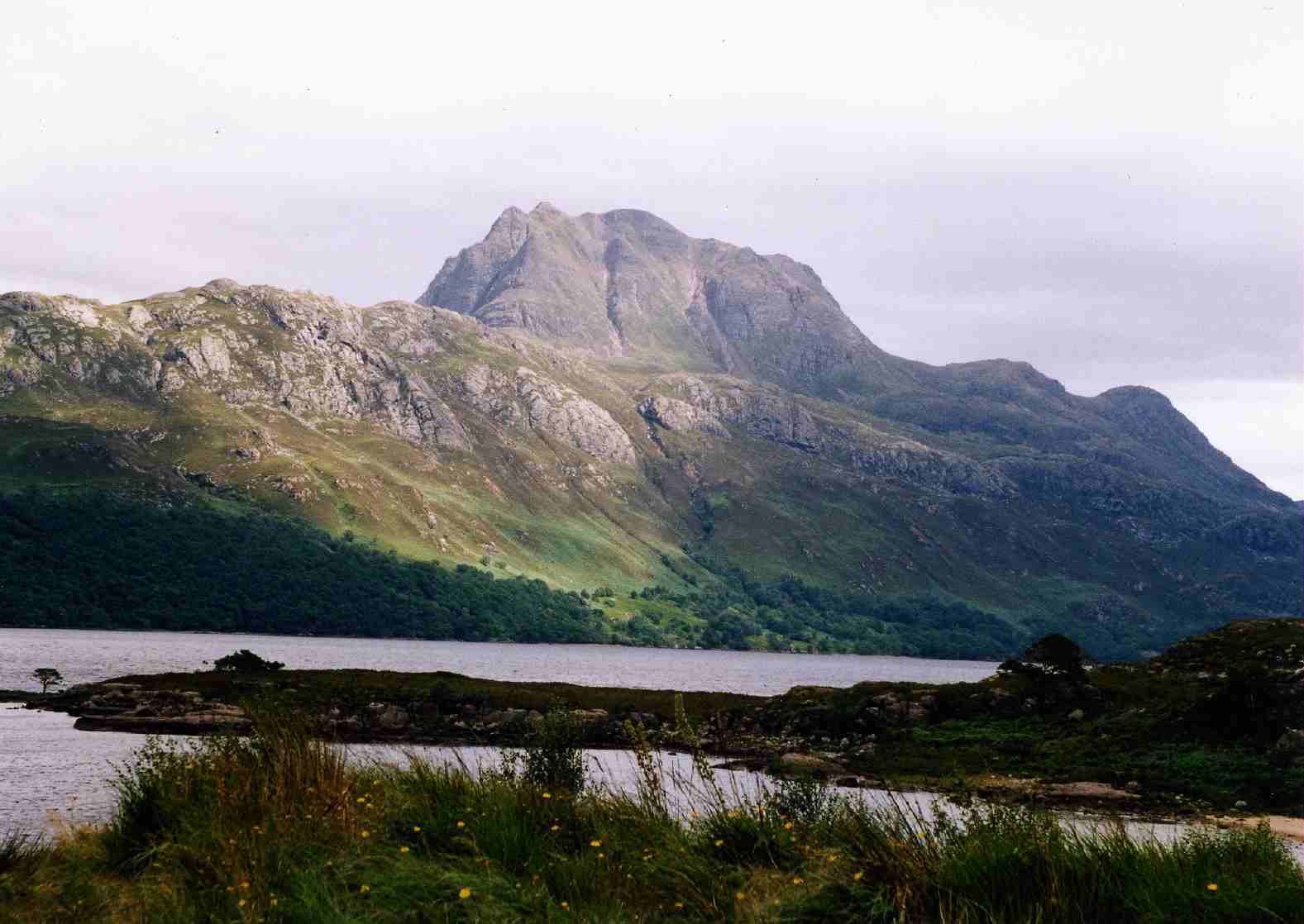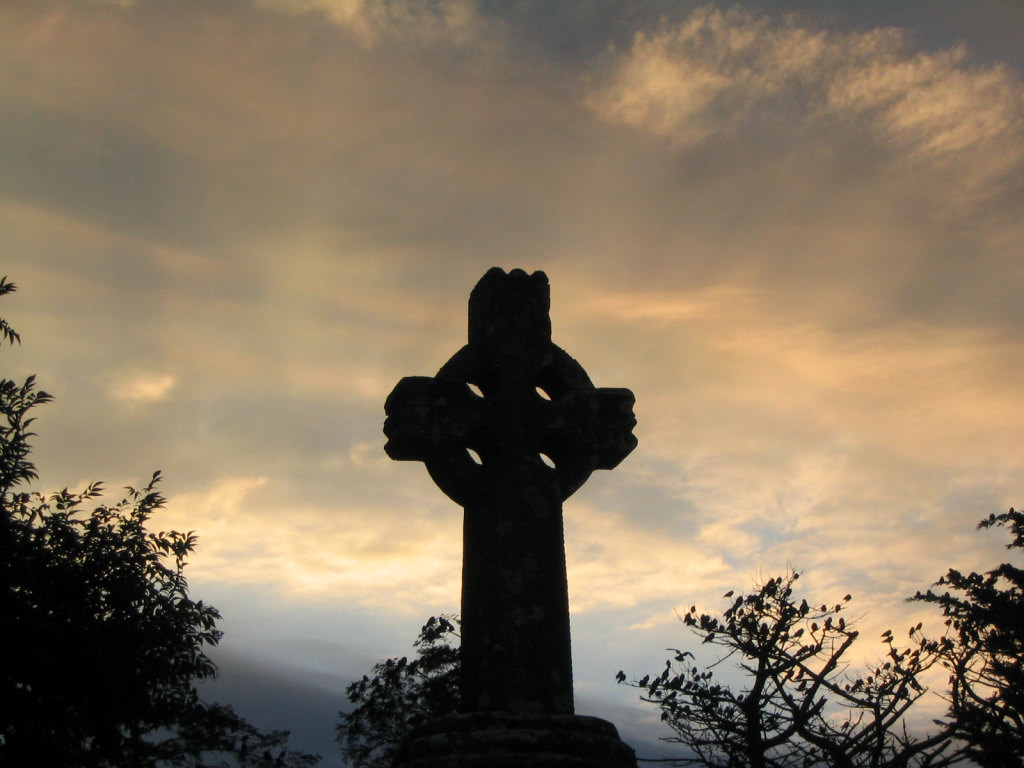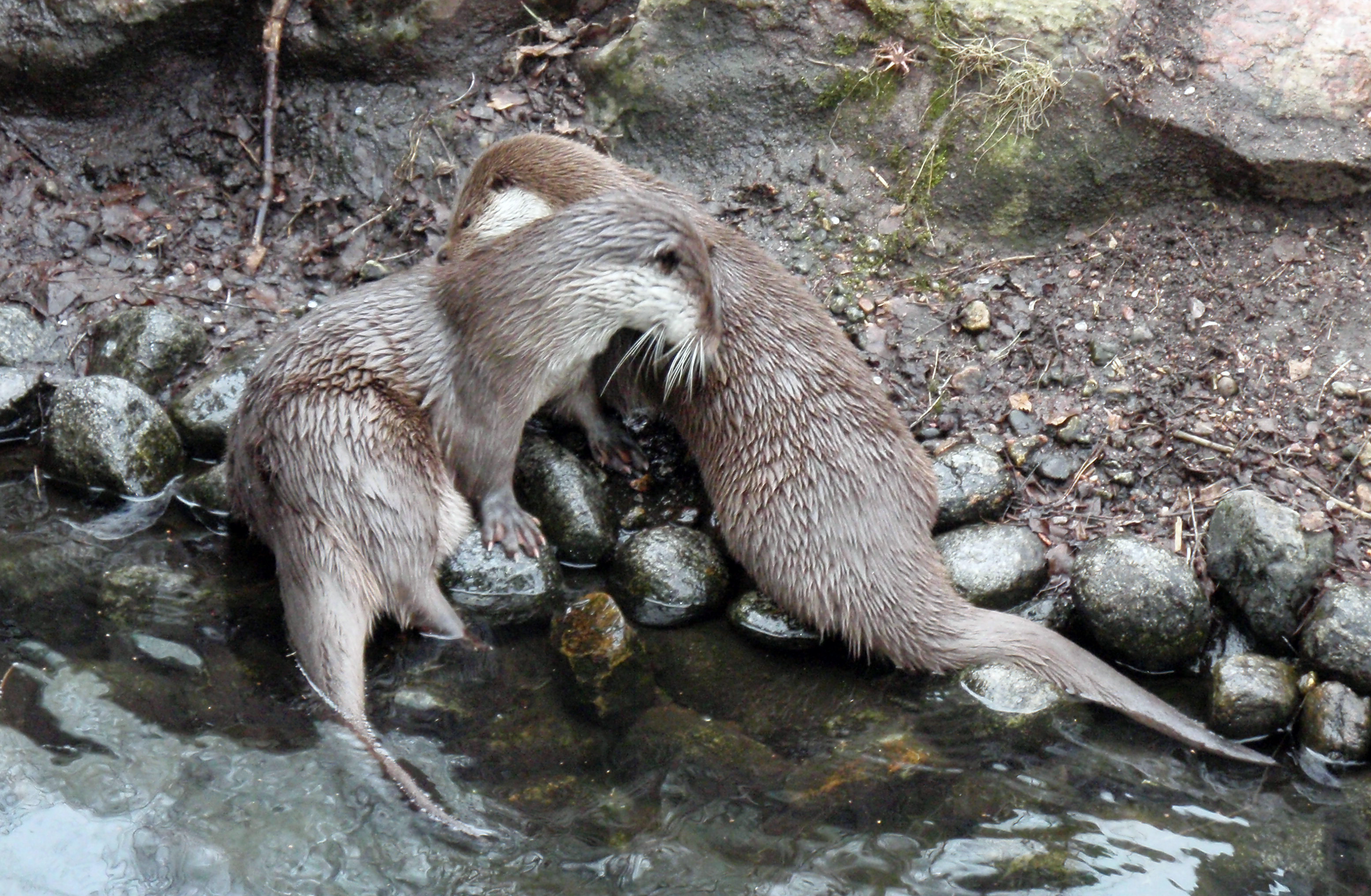|
Loch Maree
Loch Maree () is a loch in Wester Ross in the Northwest Highlands of Scotland. At long and with a maximum width of , it is the fourth-largest freshwater loch in Scotland; it is the largest north of Loch Ness. Its surface area is . Loch Maree contains five large wooded islands and over 60 smaller ones, many of which have their own lochans. The largest island, Eilean Sùbhainn, contains a loch that itself contains an island,Ordnance Survey. 1:25000 ''Explorer'' map. Sheet 433, Torridon - Beinn Eighe & Liathach. a situation that occurs nowhere else in Great Britain. Isle Maree holds the remains of a Pre-Reformation chapel and Christian pilgrimage shrine believed to be the 8th century Hermitage (religious retreat), hermitage of Saint Máel Ruba (d. 722), a Celtic Church missionary from Bangor Abbey in Gaelic Ireland who also founded the monastery of Applecross in 672. It is after him that Loch Maree is named; prior to the saint's arrival in the area the loch is believed to have bee ... [...More Info...] [...Related Items...] OR: [Wikipedia] [Google] [Baidu] |
Slioch From Loch Maree
Slioch () is a mountain in the Scotland, Scottish Highland (council area), Highlands situated in Wester Ross, eight kilometres north of the village of Kinlochewe. Slioch reaches an elevation of and towers above the southeastern end of Loch Maree to give one of the best known and most photographed sights (from the A832 road) in the Scottish Highlands, Highlands. VisitScotland, the Scottish national tourist agency, has used video footage of Slioch in its television advertisements. The mountain is composed of Torridonian sandstone on a base of Lewisian complex, Lewisian Gneiss and has steep crags on three sides and allows easy access for the walker only from the south east where the large open Cirque, corrie of Coire na Sleaghaich has two ridges on its flanks which the walker can use. The mountain's name comes from the Scottish Gaelic language, Gaelic word "sleagh" and means "the spear" and this only becomes obvious when Slioch is viewed from Lochan Fada to the northeast, from her ... [...More Info...] [...Related Items...] OR: [Wikipedia] [Google] [Baidu] |
Slioch
Slioch () is a mountain in the Scottish Highlands situated in Wester Ross, eight kilometres north of the village of Kinlochewe. Slioch reaches an elevation of and towers above the southeastern end of Loch Maree to give one of the best known and most photographed sights (from the A832 road) in the Highlands. VisitScotland, the Scottish national tourist agency, has used video footage of Slioch in its television advertisements. The mountain is composed of Torridonian sandstone on a base of Lewisian Gneiss and has steep crags on three sides and allows easy access for the walker only from the south east where the large open corrie of Coire na Sleaghaich has two ridges on its flanks which the walker can use. The mountain's name comes from the Gaelic word "sleagh" and means "the spear" and this only becomes obvious when Slioch is viewed from Lochan Fada to the northeast, from here the subsidiary top of Sgùrr an Tuill Bhàin (The Peak of the White Hollow) (933 metres) dominates ... [...More Info...] [...Related Items...] OR: [Wikipedia] [Google] [Baidu] |
Celtic Church
Celtic Christianity is a form of Christianity that was common, or held to be common, across the Celtic-speaking world during the Early Middle Ages. The term Celtic Church is deprecated by many historians as it implies a unified and identifiable entity entirely separate from that of mainstream Western Christendom. For this reason, many prefer the term Insular Christianity. As Patrick Wormald explained, "One of the common misconceptions is that there was a ''Roman'' Church to which the ''Celtic'' Church was nationally opposed." Some writers have described a distinct "Celtic Church" uniting the Celtic peoples and distinguishing them from adherents of the Roman Church, while others classify Celtic Christianity as a set of distinctive practices occurring in those areas. Varying scholars reject the former notion, but note that there were certain traditions and practices present in both the Irish and British churches that were not seen in the wider Christian world. Such practic ... [...More Info...] [...Related Items...] OR: [Wikipedia] [Google] [Baidu] |
A832 Road
The A832 is a road in the Scottish Highlands, linking Cromarty, on the east coast, to Gairloch on the west coast, and beyond Gairloch to Braemore Junction. It is long and runs entirely in the former county of Ross and Cromarty. The road forms part of the Wester Ross Coastal Trail. Cromarty to Gorstan Starting in Cromarty on the Black Isle, the A832 travels south alongside the Moray Firth to Fortrose, then turns west, heading inland. It crosses the A9 road (Great Britain), A9 and A835 road, A835 at Tore, Scotland, Tore and continues to Muir of Ord, passing near to the Beauly Firth. Five miles after Muir of Ord, the A832 meets the A835 road, A835 again at a T-junction, and turning left, multiplexes with the A835 for to Gorstan. On this stretch it passes Contin, the Rogie Falls and Loch Garve. Gorstan to Gairloch At Gorstan the A832 and A835 diverge again. They meet again later on at Braemore Junction, where the A832 terminates at the A835. From Gorstan to Braemore Junction on ... [...More Info...] [...Related Items...] OR: [Wikipedia] [Google] [Baidu] |
Poolewe
Poolewe () is a small village in Wester Ross in the North West Highlands of Scotland, about northwest of Inverness, by Loch Ewe. The River Ewe, one of the shortest in Scotland, joins the sea less than from Inverewe Garden, renowned for its subtropical plants. The village is surrounded by mountains and the sea. The village has an indoor heated swimming pool, a coffee shop, a hotel and a shop. Most of the arts events in the area take place in the village hall, as do the village markets. The town was an important port for the Arctic Convoy bringing supplies to Soviet Union via north route. Origin of the name Literally the name means "the pool on the Ewe river". However, William J. Watson, in his 1904 ''Place Names of Ross and Cromarty'', records the name as "Abhainn Iù, Ewe River", which he suggests may be Irish or Pictish in origin. Climate Poolewe has a mild climate for its latitude, due to the warm waters of the North Atlantic Drift. The Met Office operates a weather sta ... [...More Info...] [...Related Items...] OR: [Wikipedia] [Google] [Baidu] |
Loch Ewe
Loch Ewe () is a sea loch in the region of Wester Ross in the Northwest Highlands of Scotland. The shores are inhabited by a traditionally Gàidhlig-speaking people living in or sustained by crofting villages, the most notable of which, situated on the north-eastern shore, is the Aultbea settlement. History Due to the rugged and inaccessible terrain in which it is located, Loch Ewe has always been an assembly point for maritime trade. Around 1610 the area at the head of Loch Ewe, today known as Poolewe, was urbanised around an iron furnace using charcoal produced in the surrounding woodlands for fuel. English ironmasters found it more economic to ship the ore to Poolewe for smelting than to ship the processed charcoal to England to run furnaces there. The crofting villages which were established in the 1840s, as a result of the local parish's estate being reformed from run-rig to fixed holdings properties, were always quite small. Bualnaliub, nine miles (fifteen kilome ... [...More Info...] [...Related Items...] OR: [Wikipedia] [Google] [Baidu] |
Loch Maree - Sir David Young Cameron - ABDAG002667
''Loch'' ( ) is a word meaning "lake" or " sea inlet" in Scottish and Irish Gaelic, subsequently borrowed into English. In Irish contexts, it often appears in the anglicized form "lough". A small loch is sometimes called a lochan. Lochs which connect to the sea may be called "sea lochs" or "sea loughs". Background This name for a body of water is Insular CelticThe current form has currency in the following languages: Scottish Gaelic, Irish, Manx, and has been borrowed into Lowland Scots, Scottish English, Irish English and Standard English. in origin and is applied to most lakes in Scotland and to many sea inlets in the west and north of Scotland. Many of the loughs in Northern England have also previously been called "meres" (a Northern English dialect word for "lake", and an archaic Standard English word meaning "a lake that is broad in relation to its depth"), similar to the Dutch , such as the ''Black Lough'' in Northumberland. Some lochs in Southern Scotland ... [...More Info...] [...Related Items...] OR: [Wikipedia] [Google] [Baidu] |
Protected Areas Of Scotland
Many parts of Scotland are protected in accordance with a number of national and international designations because of their environmental, historical or cultural value. Protected areas can be divided according to the type of resource which each seeks to protect. NatureScot has various roles in the delivery of many environmental designations in Scotland, i.e. those aimed at protecting flora and fauna, scenic qualities and geological features. Historic Environment Scotland is responsible for designations that protect sites of historic and cultural importance. Some international designations, such as World Heritage Sites, can cover both categories of site. The various designations overlap considerably with many protected areas being covered by multiple designations with different boundaries. National environmental designations National parks The national parks of Scotland are managed areas of outstanding landscape where some forms of development are restricted to preserve the ... [...More Info...] [...Related Items...] OR: [Wikipedia] [Google] [Baidu] |
Caledonian Pinewood
The Caledonian Forest is the ancient (old-growth) temperate forest of Scotland. The forest today is a reduced-extent version of the pre-human-settlement forest, existing in several dozen remnant areas. The Scots pines of the Caledonian Forest are directly descended from the first pines to arrive in Scotland following the Late Glacial; arriving about 7000 BC. The forest reached its maximum extent about 5000 BC, after which the Scottish climate became wetter and windier. This changed climate reduced the extent of the forest significantly by 2000 BC. From that date, human actions (including the grazing effects of sheep and deer) reduced it to its current extent. The forest exists as 35 remnants, as authenticated by Steven & Carlisle (1959) (or 84 remnants, including later subjective subdivisions of the 35) covering about or . The Scots pines of these remnants are, by definition, directly descended from the first pines to arrive in Scotland following the ic ... [...More Info...] [...Related Items...] OR: [Wikipedia] [Google] [Baidu] |
European Otter
The Eurasian otter (''Lutra lutra''), also known as the European otter, Eurasian river otter, European river otter, common otter, and Old World otter, is a semiaquatic mammal native to Eurasia and the Maghreb. The most widely distributed member of the otter subfamily (Lutrinae) of the weasel family (Mustelidae), it is found in the waterways and coasts of Europe, many parts of Asia, and parts of northern Africa. The Eurasian otter has a diet mainly of fish, and is strongly territorial. It is endangered in some parts of its range, but is recovering in others. Description The Eurasian otter is a typical species of the otter subfamily. Brown above and cream below, these long, slender creatures are well-equipped for their aquatic habits. Their bones show osteosclerosis, increasing their density to reduce buoyancy. This otter differs from the North American river otter by its shorter neck, broader visage, the greater space between the ears and its longer tail. However, the Eurasian ... [...More Info...] [...Related Items...] OR: [Wikipedia] [Google] [Baidu] |
Black-throated Diver
The black-throated loon (''Gavia arctica''), also known as the Arctic loon and the black-throated diver, is a migratory aquatic bird found in the northern hemisphere, primarily breeding in freshwater lakes in northern Europe and Asia. It winters along sheltered, ice-free coasts of the north-east Atlantic Ocean and the eastern and western Pacific Ocean. This loon was first described by Carl Linnaeus in 1758 and has two subspecies. It was previously considered to be the same species as the Pacific loon, of which it is traditionally considered to be a sister species, although this is debated. In a study that used mitochondrial and nuclear intron DNA, the black-throated loon was found to be sister to a clade consisting of the Pacific loon and two sister species, the common loon and the yellow-billed loon. The black-throated loon measures about in length and can weigh anywhere from . In breeding plumage, the adult of the nominate subspecies has mostly black upperparts, with the ... [...More Info...] [...Related Items...] OR: [Wikipedia] [Google] [Baidu] |
Kinlochewe
Kinlochewe ( or ) is a village in Wester Ross in the Northwest Highlands of Scotland. It is in the parish of Gairloch, the community of Torridon and Kinlochewe and the Highland council area. It lies near the head of Loch Maree in its magnificent valley, and serves as a junction between the main Ullapool road north, and that which heads west to the coast at Loch Torridon. Loch Maree was at one time also known as Loch Ewe, hence the village's apparently confused name. Community Kinlochewe has a couple of shops, a hotel and bunkhouse, mountain chalets, several bed and breakfasts, a post office (with internet café), and one of very few petrol filling stations for many miles in any direction. Buses connect the village with Gairloch, the railhead at Achnasheen, Dingwall and Inverness. The village contains two churches, Kinlochewe Free Church, built in 1873, and the Church of Scotland. To the north of the village, by the car park, is a First World War (1914–18) memorial. Two s ... [...More Info...] [...Related Items...] OR: [Wikipedia] [Google] [Baidu] |






